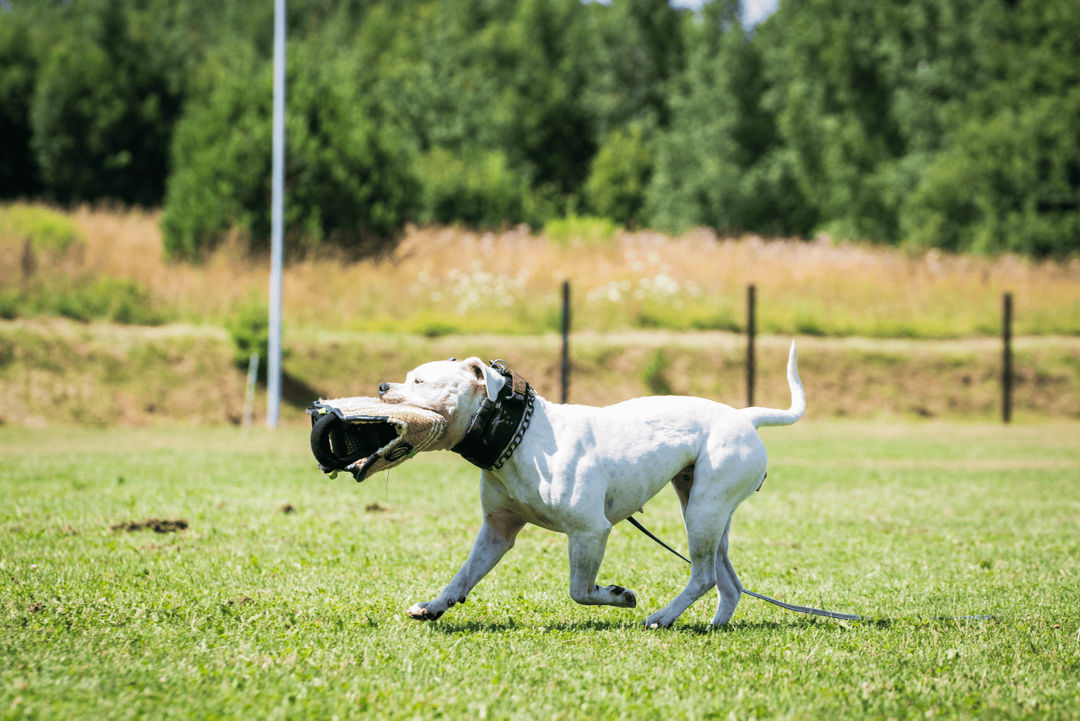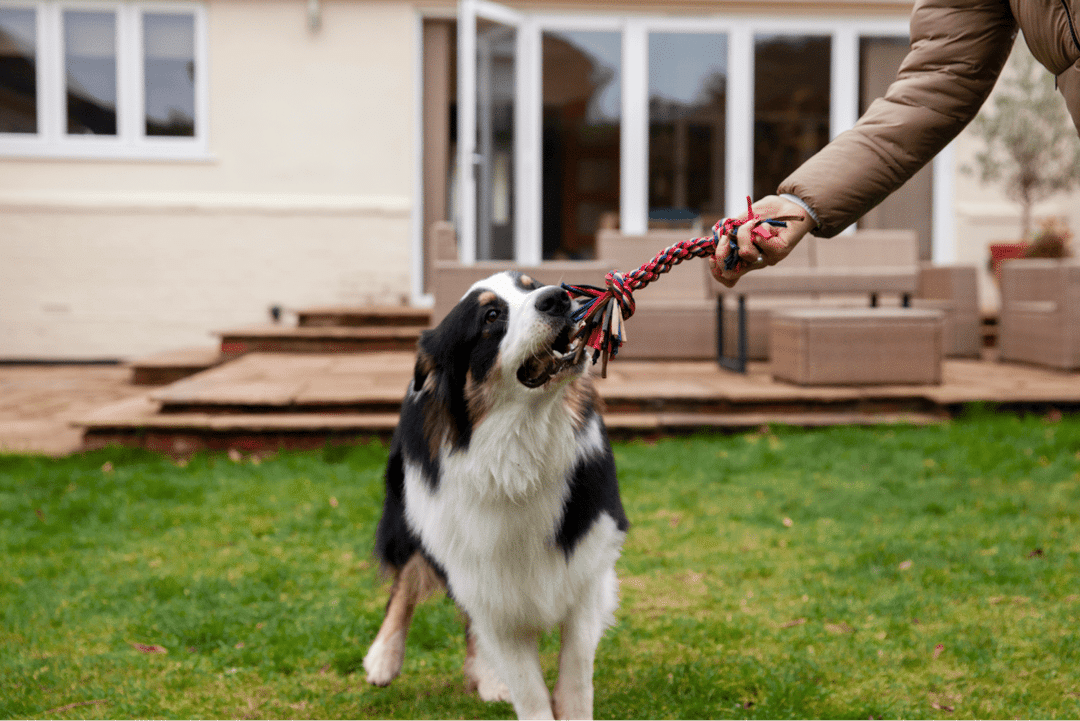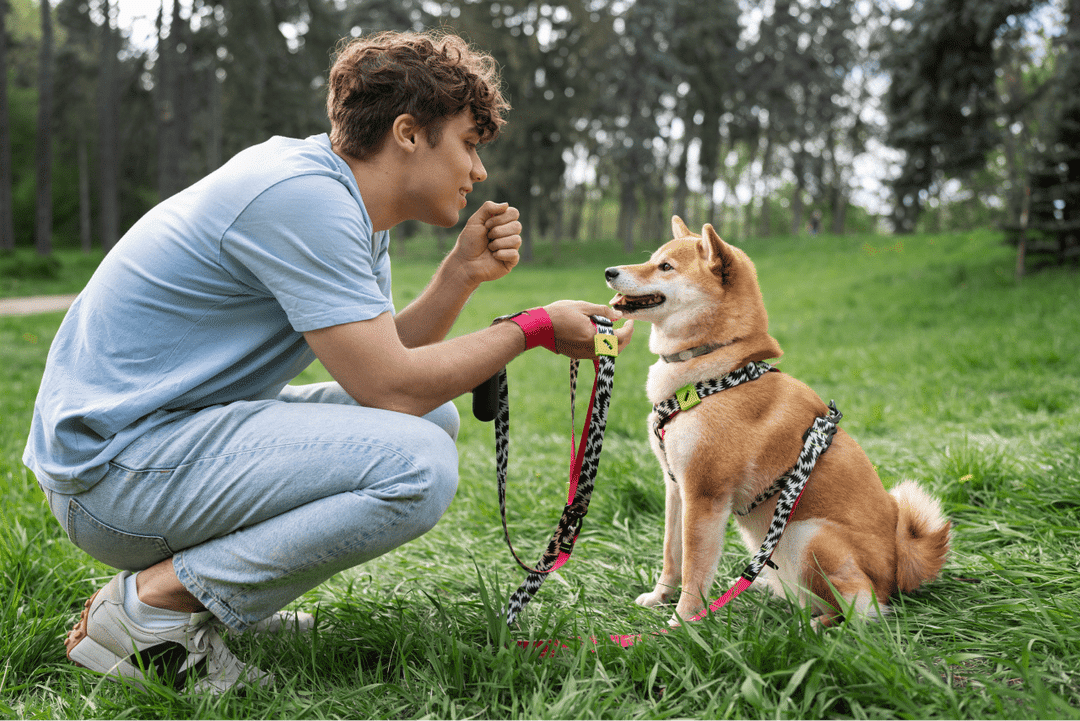
Training
Positive Reinforcement Techniques for Aggressive Dogs
• 6 min read
Transform your aggressive dog's behavior with effective and humane positive reinforcement techniques! Aggressive behavior in dogs can be challenging and stressful for pet owners. However, with the right training methods, you can manage and reduce your dog's aggression, leading to a happier and more harmonious home.
This guide will cover positive reinforcement techniques for aggressive dogs, providing you with the tools and knowledge to address this issue successfully.
Understanding Aggression in Dogs
Causes of Aggression
To effectively address aggressive behavior, it's essential to understand its root causes. Aggression in dogs can stem from various factors, including:
Fear and Anxiety: Many dogs exhibit aggression when they feel threatened or scared. This type of aggression is often a defensive response to perceived danger.
Lack of Socialization: Dogs that haven't been properly socialized may react aggressively to unfamiliar people, animals, or environments.
Health Issues: Underlying medical conditions, such as pain, neurological disorders, or hormonal imbalances, can cause aggression. It's crucial to rule out health problems with a veterinarian before starting any training regimen.
What is Positive Reinforcement?
Definition and Principles
Positive reinforcement is a training method that focuses on rewarding desired behaviors and ignoring unwanted behaviors. The goal is to encourage the dog to repeat good behaviors by associating them with positive outcomes.
Rewarding Desired Behaviors: Positive reinforcement involves giving your dog a reward (such as a treat, praise, or playtime) immediately after they perform a desired behavior.
Ignoring Unwanted Behaviors: Instead of punishing bad behavior, you ignore it and focus on reinforcing the positive behaviors you want to see more of.
Benefits of Positive Reinforcement for Aggressive Dogs
Building Trust and Confidence
One of the primary benefits of positive reinforcement is that it helps build trust and confidence between you and your dog.
Strengthening the Dog-Owner Bond: By consistently rewarding good behavior, your dog learns to associate you with positive experiences, which strengthens your bond.
Reducing Fear and Anxiety: Positive reinforcement reduces fear and anxiety by creating a safe and encouraging environment for your dog to learn and grow.
Long-term Behavior Change
Positive reinforcement promotes long-term behavior change by encouraging your dog to consistently exhibit positive behaviors.
Promoting Consistent Positive Behavior: Regularly rewarding good behavior helps your dog understand what is expected of them, leading to more consistent positive behavior over time.
Avoiding Negative Side Effects of Punishment: Unlike punishment-based methods, positive reinforcement avoids negative side effects such as increased fear, anxiety, and aggression.
Key Techniques in Positive Reinforcement
Using Treats and Rewards
Treats and rewards are essential tools in positive reinforcement training.
Choosing the Right Treats: Select high-value treats that your dog loves and reserve them specifically for training sessions. This makes the rewards more meaningful and motivating.
Timing of Rewards: Timing is crucial in positive reinforcement. Reward your dog immediately after they perform the desired behavior to create a clear association between the behavior and the reward.
Clicker Training
Clicker training is a popular positive reinforcement technique that uses a clicking sound to mark desired behaviors.
Basics of Clicker Training: A clicker is a small device that makes a clicking sound when pressed. The sound is used to mark the exact moment your dog performs the desired behavior, followed by a reward.
Steps to Implement Clicker Training:
1️⃣ Introduce the Clicker: Start by clicking the clicker and immediately giving your dog a treat. Repeat this several times until your dog associates the click with a reward.
2️⃣ Mark Desired Behaviors: Use the clicker to mark the exact moment your dog performs the desired behavior, then immediately reward them.
3️⃣ Practice Regularly: Consistent practice helps reinforce the behavior and strengthen the association between the click and the reward.

Step-by-Step Guide to Implementing Positive Reinforcement
Setting Up for Success
Creating a conducive environment for training is crucial for success.
Creating a Safe Training Environment: Choose a quiet, distraction-free area for training sessions. This helps your dog focus and reduces the likelihood of stress or anxiety.
Consistency and Routine: Establish a regular training routine and stick to it. Consistent training sessions help your dog understand expectations and reinforce learning.
Introducing New Commands
Start with basic commands and gradually increase the difficulty as your dog becomes more comfortable and confident.
Basic Commands to Start With: Begin with simple commands such as "sit," "stay," and "come." These foundational commands are essential for building control and communication.
Gradual Increase in Difficulty: Once your dog masters the basic commands, introduce more challenging commands and behaviors. Gradual progression ensures your dog remains engaged and continues to learn.
Dealing with Setbacks
Training an aggressive dog can be challenging, and setbacks are normal. It's important to stay patient and adjust your techniques as needed.
Managing Frustration: Training can be frustrating at times, but it's crucial to remain calm and patient. Frustration can negatively impact your dog's progress and trust in you.
Adjusting Techniques as Needed: Every dog is different, and what works for one may not work for another. Be flexible and willing to adjust your training techniques based on your dog's needs and responses.
Common Mistakes to Avoid
Inconsistent Training
Inconsistent training can hinder progress and confuse your dog.
Importance of Consistency: Consistency is key in positive reinforcement training. Ensure that all family members use the same commands and rewards to reinforce desired behaviors.
Getting All Family Members on Board: Make sure everyone in the household is on the same page with training techniques. Consistent reinforcement from all family members helps your dog learn more effectively.
Over-reliance on Treats
While treats are an essential tool in positive reinforcement, it's important to balance treats with other forms of rewards.
Balancing Treats and Praise: Use verbal praise and affection in addition to treats. This helps your dog understand that good behavior is always appreciated, even when treats aren't available.
Weaning Off Treats Over Time: Gradually reduce the frequency of treats as your dog becomes more consistent with desired behaviors. Replace treats with praise, playtime, or other rewards to maintain motivation.
Frequently Asked Questions
How Long Does It Take to See Results?
The time it takes to see results varies depending on the dog and the severity of their aggression. Consistent training can show improvements in a few weeks, but long-term behavior change may take several months.
What If My Dog Doesn’t Respond to Treats?
Some dogs may not be motivated by treats. In such cases, try using other rewards such as toys, playtime, or affection. Find what motivates your dog and use it to reinforce positive behavior.
Can I Use Toys as Rewards Instead?
Yes, toys can be an effective reward for many dogs. Use toys that your dog loves and reserve them for training sessions to keep them special and motivating.

Conclusion
Recap of Positive Reinforcement Benefits
Positive reinforcement is a powerful and humane training method that helps build trust and confidence, promote consistent positive behavior, and avoid the negative side effects of punishment. By focusing on rewarding desired behaviors and ignoring unwanted behaviors, you can effectively manage and reduce your dog's aggression.
Summary of Key Points
✅ Understanding the root causes of aggression is essential for effective training.
✅ Positive reinforcement involves rewarding desired behaviors and ignoring unwanted behaviors.
✅ Key techniques include using treats and rewards, clicker training, and maintaining consistency.
✅ Avoid common mistakes such as inconsistent training and over-reliance on treats.
✅ Stay patient and adjust your techniques as needed to meet your dog's unique needs.
Encouragement to Start Training Today
Transforming your aggressive dog's behavior is a journey that requires time, effort, and dedication. By implementing positive reinforcement techniques consistently and patiently, you can help your dog become a happier and more well-behaved member of your family. Start training today and enjoy the benefits of a positive, trusting relationship with your dog.
MMDC Team
Healthy Pet, Happy Pawrents 💛